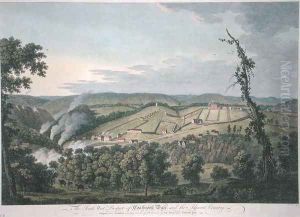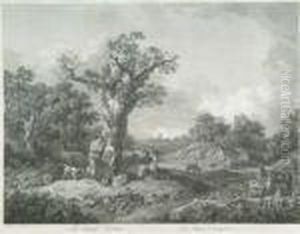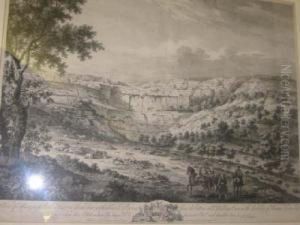Francois Vivares Paintings
Francois Vivares was a French landscape engraver and print publisher who spent most of his career in England. Born on July 11, 1709, in Montpellier, France, Vivares showed an early talent for art which led him to move to Paris to further his studies. However, seeking greater opportunities, he eventually moved to London in 1727, where he would establish himself as a prominent figure in the British art scene.
In London, Vivares initially worked under engraver and publisher George Vertue, who was known for his portraits and antiquarian subjects. However, Vivares's interest in landscapes quickly became evident, and he became renowned for his ability to translate the work of painters into detailed and expressive engravings. He had a particular affinity for the English countryside and the works of classical landscape painters such as Claude Lorrain.
Vivares's engravings were highly sought after, and he produced a significant number of works after paintings by both British and Continental artists. He was not only skilled at the technical aspects of engraving but also had a keen sense for the aesthetic qualities of the landscapes he reproduced, contributing to the development of the picturesque aesthetic in England.
Aside from his work as an engraver, Francois Vivares also operated a successful print shop on Great Newport Street in London, where he sold prints of his own work and those of other artists. His shop became a hub for artists and art connoisseurs, further cementing his reputation in the art world.
Vivares trained several apprentices who would go on to become accomplished engravers themselves. His influence extended beyond his own work and helped to elevate the status of landscape engraving during the 18th century.
Francois Vivares died on November 28, 1780, in London. His legacy is preserved through his engravings, many of which are held in the collections of major museums and galleries. His work continues to be appreciated for its technical mastery and its representation of the idyllic landscapes that defined the English aesthetic of his time.










